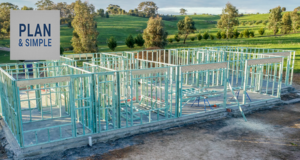
Planning where your air conditioner will be installed (or even where to place your fan) can make a very big difference in how effectively you can cool a room.
The most obvious place to install an air conditioner is wherever it’s needed most, and wherever it will make you the most comfortable. There are a great many things that can affect how an air conditioner performs based on its position – perhaps too many for it to be an exact science. There are a couple of basic rules to follow though, which will ensure that the placement of your airconditioner is useful.
- Install it over where you sit or sleep. This is common sense – it will ensure that you can get cool air whenever you need it, and that you don’t have to wait for the entire room to cool down before enjoying its benefits.
- Install it high enough. Cool air will invariably sink to the bottom of a room, and unless you’re supplementing the air conditioner with a fan to circulate it around the room, installing it higher will help cool the room more evenly.
- Choose the room carefully. If you’re only installing a single air conditioner unit, think about where it’s going to be most useful. If you work from home, for instance, it will be most appreciated wherever you spend the bulk of your hot daylight hours. If you don’t, then you’re likely to benefit more from installing it in your bedroom so that it can provide comfort when you sleep.

Where to position indoor units and cooling ducts
Indoor units should be installed in a central location within the room you want to cool in order to allow for clear, balanced air flow throughout the space. Have a think about how the room’s going to look once the unit is installed. If the air conditioner’s being installed in a bedroom, the best place for it is probably directly above the bed. If it’s in the lounge room or study, install it so that you can direct the airflow towards wherever you sit.
Indoor units should also be installed high up on the wall to ensure that cool air is blown out throughout the room. Where possible, you should ensure that you have easy access to the unit for cleaning, though.
Another important consideration is to ensure that the indoor unit of your air conditioner is not installed directly above electrical fittings – if the unit ever ends up leaking, this could create a nasty hazard.
Be mindful of installing an indoor unit too close to a source of dust or air-borne particles (including large vents) – doing so will mean that you will probably have to clean the filter more often to keep it operating properly.
The rules for indoor cooling ducts are very similar, but you should be careful to ensure that you can direct the flow of cool air if necessary – having refrigerated air blown on your face as you sleep may have you waking up with a sore throat.
Wherever you choose to install your air conditioner, remember that any work that’s done needs to be carried out by a properly licensed installer.
Where to position outdoor units
The outdoor units of split system air conditioners are generally installed against the outside wall of the room being air conditioned, but a suitably qualified and licensed installer will be able to point out the best location for each situation.
You might also want to consider whether or not the noise from your air conditioner is likely to break your local noise pollution laws. This is fairly unlikely unless the unit is quite close to the neighbours’ doors or windows. Check with your local council to find out what the regulations are.
Outdoor units should be mounted in stable places where they won’t vibrate, where they have plenty of free space on either side to allow airflow, where they’re easily accessible for maintenance, and where they aren’t likely to be exposed to corrosive substances.
Where to position ceiling fans
Correctly positioning ceiling fans is fairly simple. In smaller rooms, they should be installed in the centre of the room to allow a nice even flow of air. If you have open-plan living areas, fans should be installed above the centre of lounge, cooking or dining areas. Most houses in Australia have a standard ceiling height of about 240cm. Ceilings are usually hung 30cm from the roof, and 210cm from the floor.
Where to position portable fans and evaporative coolers
Again, the positioning of fans is never wrong provided that they’re circulating air around you and others in the room. Pedestal, box or tower fans are most effective when they are faced directly and the people in the room (or oscillating in their general direction), but breeze from these fans can also be effective if reflected off walls or other objects.
Portable fans can also have the added advantage of promoting ventilation in a room if they’re placed in doorways or in front of windows. Just make sure they’re not fighting the natural ventilation flow. The same basic rules apply for evaporative coolers.





